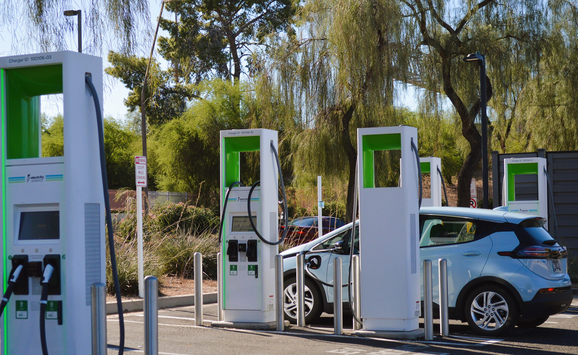On July 5th, 2016, the National Highway Traffic Safety Administration (NHTSA) increased the fine associated with noncompliance under Corporate Average Fuel Economy (CAFE) standards for light duty vehicles from $55 per mile per gallon (mpg) per vehicle to $140—nearly a threefold increase.
Inflation appears to be the motivation for the fine increase. Since 1983, the noncompliance fine has been increased only once. In 1997, the fine was increased from $50 to $55 per vehicle for every 1 mpg below the standard. Since 1997, the fine has remained fixed. The current increase to $140 reflects inflation of goods in the United States since the early 80s: $50 in 1980 is equivalent to about $145 in 2016 dollars.
For many years, NHTSA’s fuel economy standards had remained constant and most domestic and Japanese manufacturers were able to meet them, but many European automakers did not and paid fines in lieu of compliance. The real cost of paying fines was clearly declining as the dollar fines remained relatively constant.
But there have been major changes in fuel economy standards in recent years. The Environmental Protection Agency (EPA) was granted the authority to regulate CO2 emissions as a greenhouse gas (GHG) under the Clean Air Act in 2007 and in 2010 EPA joined NHTSA in setting higher fuel economy and GHG emissions standards on auto manufacturers. These requirements increase in stringency in every model year from 2012 to 2025. Although the two standards are completely separate and manufacturers must comply with both, they essentially regulate the same thing: GHG emissions are directly related to the amount of gasoline fuel used.
How the increase in the NHTSA fine will influence manufacturer decisions going forward depends on the interaction between what is required under the CAFE and GHG standards. Although the two programs are supposedly harmonized so manufacturers face only one standard, in a recent paper we have identified a number of potentially important differences between them, including the cost of noncompliance. Under EPA’s GHG rule, non-compliance is not allowed so there is no formal penalty in lieu of compliance. Each case of noncompliance would be handled in separate negotiation, but it has been suggested that $37,000 per vehicle out of compliance is a maximum penalty. If the true fine is indeed in the ballpark of this figure, then manufacturers already have the incentive to comply with the GHG program (which makes them in compliance with the CAFE program). Non-compliance under the EPA program appears to be much more costly than the NHTSA fine, even after this large change to the NHTSA fine.
However, there are other differences between the programs that make complying with the two rules more complex. The two rules each have different policies for earning and transferring credits for over-compliance. For example, EPA is more lenient about trading credits between cars and trucks. This means that some companies could comply with the EPA rules, but then pay the NHTSA fine in lieu of compliance on their truck side of the market. The new, higher NHTSA fine would make this less likely.
Overall, it is likely that for many firms, the change in the NHTSA fine will have little effect. Most firms have not paid fines in the past, choosing to meet the standard. The higher fine would only make that decision more likely for more firms, which are also now required to be in compliance with the EPA rules. But as the stringency of both standards increase overtime, paying the NHTSA fines could remain an option for some. NHTSA and EPA are just beginning the formal midterm review process of the standards from model year 2022 to 2025. (Read more about Preparing for the Midterm CAFE Review and Research Questions for the Midterm CAFE Review).





